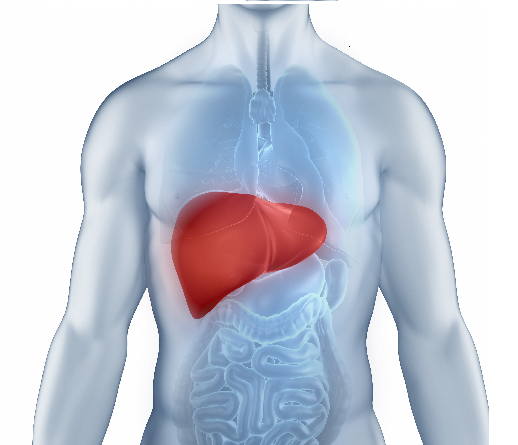Waterborne Diseases: Understanding and Prevention

Waterborne diseases are illnesses that occur due to the consumption of water that contains harmful substances and microorganisms. Because of society’s heavy reliance on water for sustenance and daily chores, these diseases spread rapidly, especially in regions with inadequate access to clean water and proper sanitation.
Without proper treatment, these complications can even prove to be fatal. According to the World Health Organization, water-transmitted diseases claim 1.5 million lives every year. Therefore, preventing these complications requires a comprehensive understanding of different types of waterborne diseases.
This article explores some of the most common waterborne diseases, their causes, and the necessary measures for their prevention.
What are Some Causes of Waterborne Diseases?
Waterborne infections mostly occur due to ingestion of contaminated water. Here are some common causes of waterborne diseases:
- Presence of Microbes: Microorganisms such as bacteria, viruses, and parasites enter water bodies through sewage and faecal matter, causing various waterborne diseases.
- Untreated Drinking Water: Drinking water that hasn’t been treated or disinfected contains harmful microorganisms.
- Inadequate Sanitation: Lack of toilets, improper wastewater management facilities, and careless disposal of human waste lead to water contamination.
- Agricultural Runoff: Farm runoff carries animal waste and chemical contaminants like fertilisers and pesticides into water bodies.
- Industrial Pollution: Discharging industrial waste into water sources contaminates them with harmful chemicals and pathogens.
- Poor Hygiene Practices: Lack of handwashing and improper food handling practices can also facilitate the transmission of waterborne pathogens.
What are Some Common Waterborne Diseases?
Here are the five most common waterborne diseases that affect the human population:
- Cholera
Cholera is caused by the bacterium named Vibrio cholerae. Patients typically contract this illness by ingesting water or food contaminated with the bacteria. Symptoms include severe diarrhoea, vomiting, dehydration, and muscle cramps. The disease can be fatal if not treated promptly.
- Typhoid Fever
Typhoid fever is a contagious waterborne disease caused by the bacterium Salmonella typhi. It not only spreads through contaminated water but person-to-person contact as well. Symptoms include prolonged fever, headache, nausea, loss of appetite, constipation, and diarrhoea. Typhoid fever is prevalent in areas lacking clean water and proper sewage disposal.
- Hepatitis A
Hepatitis A is a liver disease caused by the hepatitis A virus (HAV). It is transmitted primarily through the ingestion of contaminated food and water. Symptoms of this waterborne disease include fever, fatigue, lack of appetite, abdominal discomfort, nausea, dark urine, and jaundice.
- Dysentery
Dysentery is a waterborne infection that affects the patient’s liver. Bacterial or protozoal pathogens such as Shigella and Entamoeba histolytica cause this illness. It spreads through contaminated water, food, and person-to-person contact. In severe cases, it even causes diarrhoea with blood. Symptoms include abdominal pain, fever, and dehydration.
- Giardiasis
Giardiasis is caused by the parasite called Giardia lamblia. The parasite is commonly found in municipal water supply, swimming pools, and ponds. It spreads through the ingestion of contaminated water or food and direct contact with infected individuals. Symptoms include diarrhoea, bloating, stomach cramps, nausea, and dehydration.
How to Ensure the Prevention of Waterborne Diseases?
Prevention of waterborne diseases requires improving water quality, sanitation, and hygiene practices. Key preventive measures include:
- Water Treatment
The availability of safe drinking water is essential in controlling the spread of waterborne diseases. Water treatment methods such as boiling, filtration, and chlorination can effectively eliminate pathogens.
- Improved Sanitation
Building and maintaining proper sanitation facilities, such as toilets and sewage systems, help prevent the contamination of water sources. Educating communities about the importance of sanitation and safe waste disposal practices is also necessary.
- Hygiene Practices
Good hygiene practices, including regular handwashing with soap, safe food handling, and personal cleanliness, can reduce the spread of waterborne diseases.
- Vaccination
Vaccination is an effective preventive measure, especially against certain waterborne diseases like typhoid fever and Hepatitis A. Governments regularly sponsor vaccination drives in high-risk areas to control these diseases.
- Travel Precautions
Tourists must always be cautious when travelling to developing nations or countries affected by waterborne diseases. Preferring bottled water over tap water and avoiding raw and uncooked food can help prevent illnesses.
Water is vital for life on Earth. People not only drink water, they use it for bathing, cleaning, and growing crops. They are more likely to contract diseases and infections if the water is contaminated. So, proper waste disposal, water treatment, personal hygiene, and vaccination are essential to prevent these diseases from affecting society on a large scale.
FAQs
1. What are the 7 waterborne diseases?
The seven waterborne diseases are cholera, typhoid fever, hepatitis A, dysentery, giardiasis, cryptosporidiosis, and schistosomiasis.
2. What is the prevention of waterborne diseases?
Preventing waterborne diseases involves proper sanitation, safe drinking water, good hygiene, vaccination, and protecting water sources from contamination.
3. What are the 3 most common factors contributing to waterborne diseases?
The three most common factors contributing to waterborne diseases are inadequate sanitation, untreated drinking water, and poor hygiene practices.














